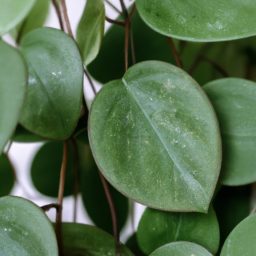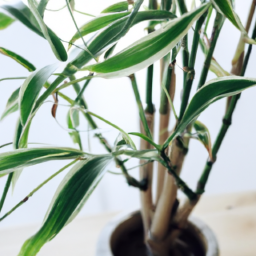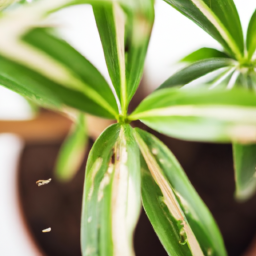
Are you looking for a way to bring some life and greenery into your home without the hassle of a demanding plant? Look no further! In this blog post, we will be discussing the perfect solution for those who want an easy indoor plant that requires minimal care and attention. Whether you have a busy schedule, lack a green thumb, or simply want to add a touch of nature to your living space, we’ve got you covered. So, let’s dive in and explore the wonderful world of easy indoor plants!
Benefits of Easy Indoor Plants for Home Décor
Introduction
Indoor plants not only add a touch of greenery to your living space but also offer a myriad of benefits for your home décor. Whether you have a green thumb or are a beginner in the world of gardening, easy indoor plants can effortlessly enhance the ambiance of any room. In this article, we will explore the numerous advantages of incorporating easy indoor plants into your home décor, and provide you with a step-by-step guide to help you get started.
Enhanced Air Quality
One of the most significant benefits of easy indoor plants is their ability to improve the air quality in your home. Through a process called photosynthesis, plants absorb carbon dioxide and release oxygen, thus purifying the air. This natural air purification system can help eliminate toxins and harmful chemicals that may be present in your indoor environment. Additionally, indoor plants can increase humidity levels, which is especially beneficial during dry seasons or in rooms with air conditioning.
When selecting easy indoor plants for air purification, consider options such as Snake Plant, Spider Plant, or Peace Lily. These plants are known for their air-purifying properties and are relatively low-maintenance, making them perfect for beginners.
Furthermore, studies have shown that indoor plants can reduce stress and improve overall well-being. The presence of greenery in your living space can create a calming and relaxing atmosphere, helping to alleviate anxiety and promote a sense of tranquility.
Visual Appeal
Easy indoor plants can instantly transform the aesthetics of your home, adding a touch of natural beauty to any room. Whether you prefer lush foliage or delicate flowers, there is a wide variety of indoor plants to suit your personal style and taste.
Consider incorporating plants with different shapes, sizes, and textures to create visual interest. For example, a tall and slender plant like the Dracaena Marginata can add verticality to a room, while a trailing plant such as the Devil’s Ivy can elegantly cascade down from a hanging planter. Mixing and matching different plant species can create a vibrant and dynamic display, enhancing the overall appeal of your home décor.
When arranging your indoor plants, consider the lighting conditions of each room. Some plants thrive in bright, indirect light, while others prefer low-light environments. By placing your plants in their ideal lighting conditions, you can ensure they flourish and contribute to the visual appeal of your home.
Improved Indoor Acoustics
Did you know that easy indoor plants can also help improve the acoustics of your living space? Plants have the remarkable ability to absorb sound, reducing background noise and echoing. This can be particularly beneficial in rooms with hard surfaces, such as tiled floors or bare walls.
Strategically placing large plants in corners or near walls can help absorb and dampen sound waves, creating a more pleasant and peaceful environment. Plants with broad leaves, such as the Fiddle Leaf Fig or the Rubber Plant, are excellent choices for improving indoor acoustics.
Moreover, the presence of indoor plants can act as a natural barrier, reducing noise pollution from outside sources such as traffic or construction. By creating a soothing and serene soundscape, easy indoor plants contribute to a more enjoyable living experience.
Conclusion
Incorporating easy indoor plants into your home décor not only enhances the visual appeal of your living space but also offers a range of benefits. From improving air quality and reducing stress to adding natural beauty and improving indoor acoustics, indoor plants have the power to transform your home into a peaceful and inviting sanctuary. So, why not embrace the world of indoor gardening and enjoy all the advantages these green companions have to offer? Start by selecting the perfect easy indoor plants for your home, and watch as they breathe new life into your surroundings.

Top 5 Low-Maintenance Indoor Plants for Beginners
Are you looking to bring some greenery into your home but worried about your lack of gardening skills? Don’t fret! There are plenty of easy indoor plants that require minimal care and can thrive even in the hands of beginners. In this article, we will introduce you to the top 5 low-maintenance indoor plants that are perfect for those starting their indoor gardening journey.
1. Snake Plant
The Snake Plant, also known as Sansevieria or Mother-in-law’s Tongue, is a popular choice among beginners due to its ability to tolerate neglect and low-light conditions. This plant has long, sword-shaped leaves that are often variegated with shades of green and yellow.
One of the key reasons why the Snake Plant is a low-maintenance option is its ability to survive in various light conditions. It can tolerate both bright, indirect light as well as low-light areas. This makes it a versatile choice for any room in your home.
When it comes to watering, the Snake Plant is forgiving. It prefers to be slightly underwatered rather than overwatered, as it is susceptible to root rot. Allow the soil to dry out between waterings, and make sure to use well-draining soil to prevent waterlogged roots.
Furthermore, the Snake Plant is known for its air-purifying qualities. It can remove toxins such as formaldehyde and benzene from the air, making it a great addition to any indoor space.
2. Pothos
Pothos, scientifically known as Epipremnum aureum, is another fantastic choice for beginners. This trailing vine plant is incredibly resilient and can adapt to various light conditions, including low-light areas. Its heart-shaped leaves come in different shades of green, making it a visually appealing addition to your home.
One of the reasons why Pothos is a low-maintenance plant is its ability to thrive in a wide range of temperatures. It can tolerate both warm and cool environments, making it suitable for most homes.
When it comes to watering, Pothos prefers to dry out between waterings. Overwatering can lead to root rot, so it’s important to let the soil dry partially before watering again. Pothos is also known for its ability to purify the air by removing toxins like formaldehyde, making it a great choice for improving indoor air quality.
Propagation of Pothos is also relatively easy, making it an excellent plant for beginners to experiment with. You can propagate Pothos by taking stem cuttings and placing them in water until they develop roots.
3. ZZ Plant
The ZZ Plant, scientifically known as Zamioculcas zamiifolia, is a visually striking plant with glossy, dark green leaves. It is an excellent choice for beginners as it can tolerate low-light conditions and requires minimal watering.
The ZZ Plant is native to drought-prone regions, which makes it highly adaptable to neglect and low-water conditions. It can go for extended periods without water, making it perfect for those who tend to forget about their plants.
When it comes to light requirements, the ZZ Plant can tolerate both low-light and bright, indirect light. However, it’s important to avoid direct sunlight as it can scorch the leaves.
When watering the ZZ Plant, it’s essential to let the soil dry out completely between waterings. Overwatering can lead to root rot, so it’s better to underwater than overwater this plant. The ZZ Plant has tuberous roots that store water, allowing it to survive in dry conditions.
4. Spider Plant
The Spider Plant, scientifically known as Chlorophytum comosum, is a classic choice for beginners due to its resilience and ease of care. It features long, arching leaves that are green with white stripes, giving it a unique and attractive appearance.
This plant can thrive in a wide range of light conditions, from bright, indirect light to low-light areas. It’s a great option for those looking to add some greenery to rooms with limited natural light.
When it comes to watering, the Spider Plant prefers to dry out partially between waterings. It’s important not to overwater this plant, as it can be susceptible to root rot. Spider Plants also enjoy higher humidity levels, so misting the leaves occasionally can be beneficial.
Spider Plants are known for their ability to produce “spiderettes” or baby plants that dangle from the mother plant. These can be easily propagated by placing them in water or planting them directly in soil.
5. Peace Lily
The Peace Lily, scientifically known as Spathiphyllum, is a beautiful flowering plant that is well-suited for beginners. It features dark green leaves and elegant white flowers, adding a touch of elegance to any indoor space.
This plant can thrive in low-light conditions, making it a perfect choice for rooms with limited natural light. However, it can also tolerate bright, indirect light. It’s important to note that Peace Lilies do not like direct sunlight, as it can scorch the leaves.
When it comes to watering, the Peace Lily will droop when it needs water, serving as a visual cue. Water the plant thoroughly and allow the soil to dry out partially before watering again. Overwatering can lead to root rot, so it’s important to strike a balance.
Peace Lilies are also known for their air-purifying qualities, making them an excellent choice for improving indoor air quality. They can remove toxins like formaldehyde, benzene, and carbon monoxide from the air.
Now that you are familiar with the top 5 low-maintenance indoor plants for beginners, you can confidently bring greenery into your home without worrying about complex care routines. Remember to choose plants that suit your lighting conditions and watering habits, and enjoy the benefits of a greener living space!

Tips for Creating an Easy Indoor Plant Care Routine
Indoor plants not only bring a touch of nature into our homes but also provide numerous benefits, such as purifying the air and reducing stress. However, many people struggle with keeping their indoor plants healthy and thriving. To help you create an easy indoor plant care routine, here are some essential tips to follow.
1. Choose the Right Plants
When it comes to indoor plants, not all are created equal. Some plants require more care and attention than others. To make your indoor plant care routine easier, start by selecting plants that are known for their low maintenance requirements.
Some excellent choices for easy indoor plants include the spider plant, pothos, snake plant, and ZZ plant. These plants are known for their ability to adapt to different light conditions and tolerate occasional neglect.
Before purchasing any plants, consider the lighting conditions in your home and choose plants that will thrive in those conditions. This will significantly reduce the amount of effort required to keep your plants healthy.
2. Provide Adequate Lighting
Proper lighting is crucial for the health and growth of indoor plants. Most indoor plants thrive in bright, indirect light. Place your plants near windows where they can receive plenty of natural light without being exposed to direct sunlight, which can cause damage.
If your home doesn’t have sufficient natural light, you can supplement it with artificial lighting. LED grow lights are an excellent option for providing the right spectrum of light for your plants. Place the lights at an appropriate distance from the plants and ensure they are on for around 12-16 hours a day.
Remember to rotate your plants regularly to ensure even growth as they tend to lean towards the light source. This simple step will help you maintain healthy and balanced plants.
3. Watering and Humidity
Watering is a critical aspect of indoor plant care. The key is to find the right balance. Overwatering can lead to root rot and other fungal diseases, while underwatering can cause wilting and dryness.
Before watering your plants, always check the moisture level of the soil. Stick your finger about an inch into the soil; if it feels dry, it’s time to water. However, if it still feels moist, wait for a few more days before watering again.
Remember that different plants have different watering needs. Succulents and cacti, for example, require less frequent watering compared to tropical plants. Always research the specific watering requirements of your plants to avoid any issues.
In addition to watering, maintaining proper humidity levels is essential, especially during the winter months when indoor air tends to be dry. You can increase humidity by placing a tray filled with water near your plants or using a humidifier.
Creating an easy indoor plant care routine is all about understanding the needs of your plants and providing the right environment for them to thrive. By choosing low-maintenance plants, providing adequate lighting, and watering properly, you can enjoy the beauty and benefits of indoor plants without feeling overwhelmed.
Essential Points
Indoor plants are a great addition to any home or office space, but not everyone has a green thumb or the time to dedicate to plant care. Luckily, there are plenty of easy indoor plants that require minimal effort and still bring a touch of nature indoors. One of the easiest indoor plants to care for is the snake plant, also known as Sansevieria. This plant is incredibly resilient and can withstand neglect, making it perfect for busy individuals or those new to plant care. Snake plants have long, upright leaves that are often variegated with shades of green and yellow, adding a pop of color to any room. They thrive in a range of lighting conditions and can tolerate low light, making them ideal for spaces with limited natural sunlight. Additionally, snake plants are known for their air-purifying qualities, improving indoor air quality by removing toxins from the environment. With minimal watering requirements and the ability to thrive in various temperatures, snake plants are a hassle-free choice for any indoor gardener. Another easy indoor plant is the pothos, also known as Devil’s Ivy. This trailing vine plant is incredibly forgiving and can survive in a wide range of conditions. Pothos plants have heart-shaped leaves that come in various shades of green, making them a visually appealing addition to any room. They can be grown in water or soil and can tolerate low to bright indirect light. Pothos plants are low-maintenance and only require occasional watering, making them perfect for those with a busy schedule or a tendency to forget about their plants. These plants are also known for their air-purifying properties, making them a popular choice for indoor spaces. Whether you’re a beginner or simply looking for an easy indoor plant, the snake plant and pothos are excellent options that will thrive with minimal care.
Let me leave you with some FAQs:
Q1: What are some easy indoor plants for beginners?
A1: If you’re new to indoor gardening, there are several easy-to-care-for plants that will thrive in your home. Some popular options include pothos, snake plant, spider plant, peace lily, and ZZ plant. These plants are known for their ability to tolerate a variety of lighting conditions and require minimal maintenance.
Q2: How often should I water my indoor plants?
A2: The watering frequency for indoor plants can vary depending on factors such as the type of plant, pot size, and environmental conditions. As a general rule, it’s best to allow the top inch of soil to dry out before watering again. Overwatering can lead to root rot, so it’s important to strike a balance and avoid keeping the soil constantly saturated.
Q3: What kind of lighting do indoor plants need?
A3: Most indoor plants thrive in bright, indirect light. Place your plants near a window where they can receive filtered sunlight throughout the day. However, it’s important to avoid exposing them to direct sunlight, as it can scorch their leaves. If you have low-light areas in your home, there are also plants that can tolerate such conditions, such as snake plants and pothos.
Q4: How do I prevent pests from infesting my indoor plants?
A4: Pest infestations can be a common issue with indoor plants. To prevent pests, regularly inspect your plants for any signs of insects or pests. If you spot any, isolate the affected plant and treat it accordingly. Additionally, maintaining good plant hygiene by regularly wiping leaves, removing dead foliage, and avoiding overwatering can help deter pests from taking hold.
Q5: What are some signs that my indoor plant is not thriving?
A5: There are several signs that indicate your indoor plant may not be thriving. These include yellowing or browning leaves, wilting, stunted growth, and a general lack of vitality. It’s important to assess the plant’s care routine, including watering, lighting, and fertilizing, to identify any potential issues. Adjusting these factors accordingly can often help revive a struggling indoor plant.

James Wong is a renowned ethnobotanist, plant scientist, and local television presenter. With a passion for demystifying plant science, he is known for translating complex botanical concepts into practical advice for everyday plant enthusiasts. James’s expertise spans from traditional gardening to cutting-edge plant technologies, making his insights accessible and informative.


